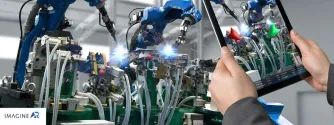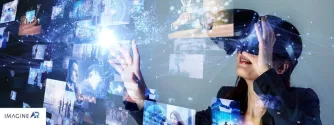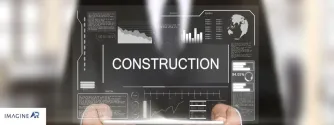
Level-Up Your Marketing Strategy With AR In 2022
Augmented Reality is now an essential tool for marketers. Businesses can use it to drive sales, increase engagement and maximize budgets - all without breaking a sweat. Additionally, it's now an established tool for marketers and advertisers to use in their advertising campaigns.
The power of this technology has been proven time after time as it changes how we interact with our surroundings, increasing sales rates while also engaging customers more than ever before!
You can track consumer behavior and create deeper emotional connections in marketing strategies to implement Augmented Reality solutions to take your 2022 plan up a notch. Here are 6 ways this technology helps you keep watch all over company operations.
1. The Cookie Death
With Google's plan to cull third-party cookies is just around the corner, advertisers and publishers must reevaluate their strategies for advertising. Nevertheless, AR provides sustenance in 2022 to create better marketing campaigns without relying on traditional methods.
With the rise of AR, brands can provide an immersive and personalized experience for their customers. First-party data from these walled gardens is harnessed to deliver this specialized content using various ad formats explicitly tailored towards each user's needs or preferences.
What's even more compelling is the recent Adweek report that shows 70% of consumers agree they are likely to interact with AR-based advertising compared to traditional digital ads. Additionally, as spatial landscapes evolve, privacy remains at the forefront. As a result, AR is critical for marketers and advertisers in building their 2022 strategies around this technology.
2. Scale-Up Personalization
With the rise of personalized marketing, companies realize that a personal touch is more important than ever. In 2021 this became even clearer on mobile devices as they offer users an unparalleled experience and mobility to suit their needs best. PwC research found that people are willing and ready to pay a lot more for personalized experiences when it comes to shopping.
With the power of AR, marketers can create more personal and contextually relevant experiences at scale. For example, product packaging that is interactive with consumers when they buy it or an unboxing video where the CEO's introduction takes place right on your countertop for the consumers in 3D.
With the rise of personalized marketing, advertisers can provide a more tailored experience for their customers. AR technology scales across all customer journey levels that become accessible and allows marketers tremendous opportunities for consumer engagement, leading to increased sales rates.
3. Enhance Account-Based Marketing
ABM has been the go-to strategy for B2B brands in recent years. Around 70% of marketers stated that using ABM helped skyrocket investment over 15% from last year's figure. This increase is mainly attributed to its success at generating awareness and engagement with target accounts through this medium, ultimately leading them into action - purchasing or conversion rate optimization!
With the pressure for business results increasing in 2022, marketers should utilize AR to make their ABM campaigns work harder. Simply put: with AR technology, there's no limit on what you achieve across all channels - from direct mail and events marketing materials down through display advertising or email newsletters. Additionally, it lets you personalize each experience much more deeply than before so that prospects feel like they're being explicitly tailored just for them.
AR is a powerful tool that can make all the difference in both the physical and digital components of ABM. For example, email campaigns linked to personalized face filters or wearable branded merch will generate more click-through and attention from potential customers.
4. Champion Sustainability
In a recent study by Clear Channel and JCDecaux, it's found that two-thirds of consumers do not trust brands. With 61% wanting greater transparency from those they purchase products or services from, this is an issue that needs addressing if you want your company's reputation to remain intact.
With climate and environmental changes impacting consumerism firmly, AR provides marketers with a perfect opportunity to communicate sustainability messaging. Brands can bridge this divide between brand purpose and consumer trust with this technology.
With the rising popularity of sustainable products, many millennials are willing to spend more. However, it's challenging for brands to provide sustainability information about these items, and they require extensive research, which most people don't have time or the money to research.
Conclusion
The future of marketing is looking bright, and we can’t wait to see what new and innovative strategies emerge over the next few years.
This article gives you a glimpse into some of the exciting possibilities on the horizon for your business with Augmented Reality solutions. So, are you prepared to take your marketing strategy up a notch with AR in 2022?
Connect with ImagineAR today to know how we can help!







